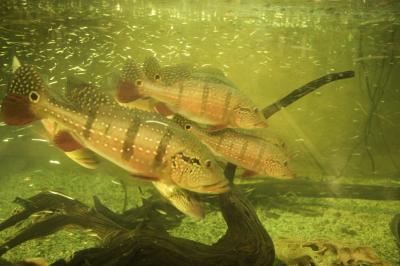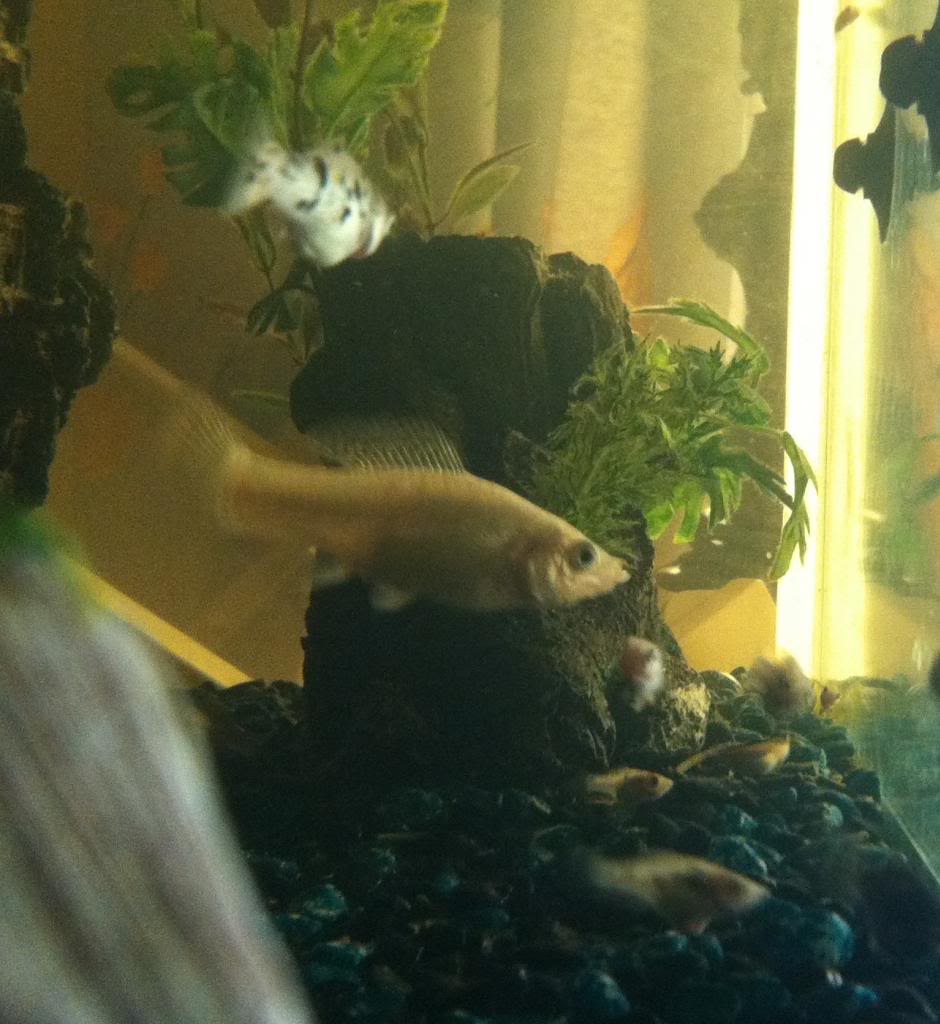
Scientific Name: Poecilia sphenops; also Poecilia latipinna (Sailfin Molly) and Poecilia velifera (Green Sailfin Molly).
 Ease of Breeding: Easy
Introduction: Mollies have been bred in captivity since the late 1800s. They come in a wide variety of colors and body shapes: black, orange, salt-and-pepper, balloon-bodied, lyre-tailed, and sailfinned—to name just a few. They tend to be a bit fussier about the conditions they're kept in, however, preÂferring brackish water to fresh, and a higher temperature than most community fish.
Sex Differences: Males have a gonopodiÂum, although it may not develop until the fish is nearly a year old. Females tend to be plumper than the males.
Water Conditions: Mollies like water that is on the hard side, so add two tablespoons per gallon of marine salt mix to their tank water. The pH should be neutral to somewhat alkaline, with 8.0 being the upper end of the range. Temperature should be 78° to 82°F, with the higher temperature being preferable.
Equipment: Mollies will readily spawn in community aquaria. Keep them in as large a tank as possible, with 29 gallons being the minimum size; use good filtration and add plenty of plants to make the fish feel secure.
Conditioning and Triggers: Supplement feedings of flake food with blood worms, brine shrimp, and black worms as well as some vegetable matter. Change about 20 percent of the water daily.
Spawning: A male Molly courts aggressively, flirting and fanning his fins. It is unclear as to whether he fertilizes the female's eggs by latching onto her with his gonopodium or simply expelling sperm near her vent. Gestation is usually 40 to 80 days depending on species—shorter for short-finned molly varieties and longest for sailfins.
As the pregÂnancy progresses, you may be able to see a gravid spot on the female if she is of a light color. As delivery draws near, the female may also begin hiding or hanging out by herÂself in plants in the tank. Fry are typically born early in the morning.
Females tend to be stressed when confined in a breeding tank, so move her to a tank of her own shortly before birth, or permit her to deliver in the main tank; the fry can then be netted and transferred to a rearing tank.
Brood Size: Can be as many as 100, but a brood of 30 to 50 is more typical.
Fry Care: Feed a good-quality fry food, newly hatched brine shrimp, microworms, and other live foods, and if possible, some vegetable matter. Do not crowd fry into a too-small tank—a gallon of water per fry is about right. Water quality is very important; start with a sponge filter, but switch to a power filter when fry are a few weeks old. This will give them current to swim against, as well as helping to maintain water quality.
 How to Kill Ich in a Fresh Water Fish Tank
How to Kill Ich in a Fresh Water Fish Tank
How to Kill Ich in a Fresh Water Fish Tank
How to Kill Ich in a Fresh Water Fish Tank
 Turtles As Pets
You may not realize just how
Turtles As Pets
You may not realize just how
 Breeding Tropical Fish
Credit: Alana R
Breeding Tropical Fish
Credit: Alana R
 Changing Filter Cartridge During New Tank Syndrome
Starting your first fish tan
Changing Filter Cartridge During New Tank Syndrome
Starting your first fish tan
 Facets To Consider When Choosing A Cruise Rental
Sbiten is made at different ways, together non-alcoholic a
Facets To Consider When Choosing A Cruise Rental
Sbiten is made at different ways, together non-alcoholic a
Copyright © 2005-2016 Pet Information All Rights Reserved
Contact us: www162date@outlook.com